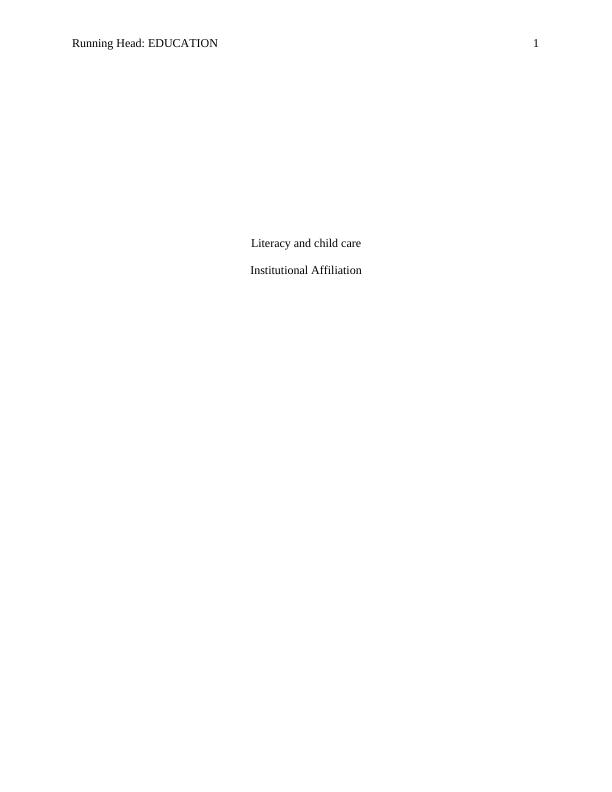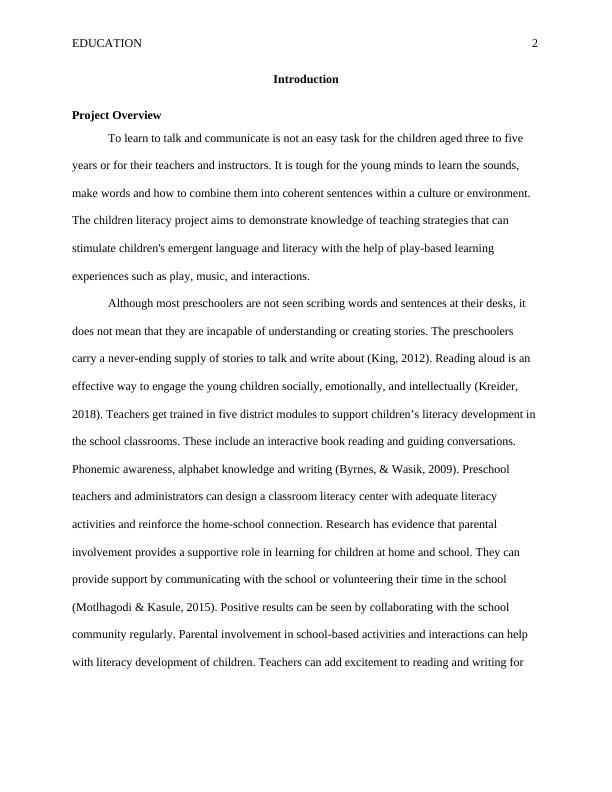Enhancing Literacy and Language Development in Preschool Children
9 Pages2550 Words239 Views
Added on 2023-06-05
About This Document
This article discusses teaching strategies that can stimulate children's emergent language and literacy with the help of play-based learning experiences such as play, music, and interactions. It also talks about designing a classroom literacy center with adequate literacy activities and reinforcing the home-school connection. The article focuses on enhancing the language and literacy among the age group of three to five-year-old children.
Enhancing Literacy and Language Development in Preschool Children
Added on 2023-06-05
ShareRelated Documents
End of preview
Want to access all the pages? Upload your documents or become a member.
EPE520: Developmental Learning and Pedagogy Assessment 2022
|9
|3445
|20
Literacy Resource Teaching Kit
|21
|4167
|7
Understanding Language and Literacy
|6
|1302
|151
Improving Child's Language through Multimodal Learning Environment in Nursery Schools
|9
|2146
|306
Reflection on Story Reading
|6
|1060
|259
Early Childhood Studies: Importance of Literacy Skill Development in Preschool Children
|5
|881
|426



